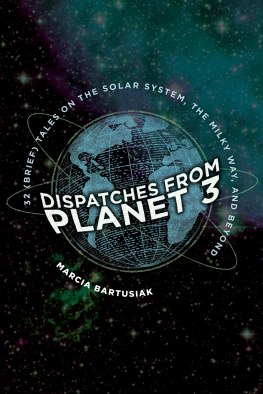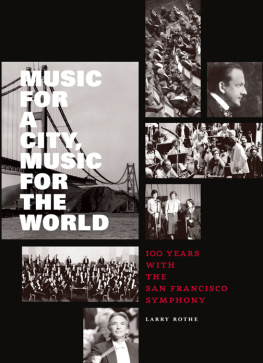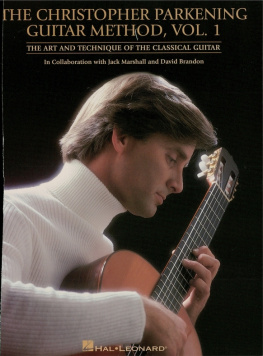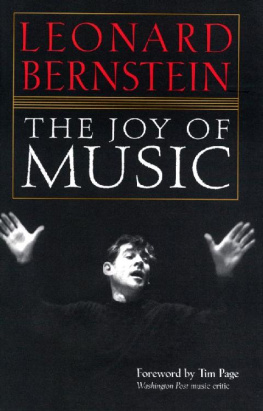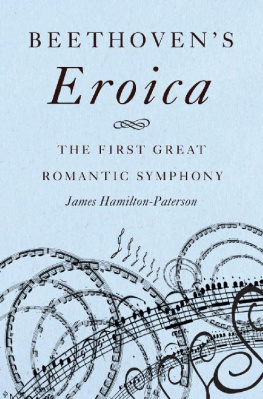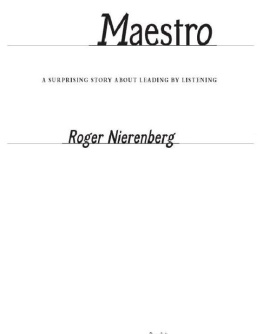EINSTEINS UNFINISHED SYMPHONY
Also by Marcia Bartusiak
Thursdays Universe
Through a Universe Darkly
Archives of the Universe
The Day We Found the Universe
Black Hole

Published with assistance from the Louis Stern Memorial Fund.
First Yale University Press edition 2017.
An earlier edition of this book was published in 2000 by Joseph Henry
Press as Einsteins Unfinished Symphony: Listening to the Sounds of Space-Time.
Copyright 2000, 2017 by Marcia Bartusiak.
All rights reserved. This book may not be reproduced, in whole or in
part, including illustrations, in any form (beyond that copying permitted
by Sections 107 and 108 of the US Copyright Law and except by
reviewers for the public press), without written permission from the
publishers.
Yale University Press books may be purchased in quantity for educational,
business, or promotional use. For information, please e-mail (UK office).
Unless otherwise noted, interior illustrations are by Rob Wood and
Matthew Frey, Wood Ronsaville Harlin, Inc., Annapolis, Md.
Set in Scala type by IDS Infotech, Ltd.
Printed in the United States of America.
Library of Congress Control Number: 2016957559
ISBN 978-0-300-22339-2
A catalogue record for this book is available from the British Library.
This paper meets the requirements of ANSI/NISO Z39.48-1992
(Permanence of Paper).
10 9 8 7 6 5 4 3 2 1
To the LIGO staff, technicians, and scientists,
for their unflagging spirit through decades of groundwork
CONTENTS
ACKNOWLEDGMENTS TO THE 2017 EDITION
AFTER I PUBLISHED THE FIRST EDITION OF this book, it took fifteen long years for gravitational-wave astronomers to detect their first signal. Everyone said that it would likely occur once the Laser Interferometer Gravitational-Wave Observatory had installed its second generation of instrumentation. The first generation that I had earlier reported on served as a test-bed for the new technologies. What I didnt count on was the signal being captured soon after the advanced, more sensitive equipment was turned on. It caught me off guard, but what a pleasant surprise it turned out to be. It allowed me to add a grand finale (or at least a chirp) to my symphony.
Much has happened over the years between these editions. Some of the major players in gravitational physics whom I originally wrote about or interviewed passed away, including John Wheeler, Vladimir Braginsky, Joseph Weber, and Roland Schilling. Felix Pirani, whose theoretical work in the 1950s was influential in convincing the physics community that gravity waves were measurable, died just weeks before LIGO scientists announced their first detection. Others have retired, while many of the young graduate students and post-docs, who carried out myriad tasks during construction, have now risen to key positions within the LIGO hierarchy. The LIGO community, once numbering in the dozens, has grown to include about a thousand collaborators located around the globe. Hundreds more are involved with gravity-wave detectors either constructed or planned in other countries, including Germany, Italy, Japan, and India. I wish I could have met them all but was grateful that many did open their doors to me as I swiftly worked on this update. For giving me their time, advice, and counsel this second go-round, I again thank GariLynn Billingsley, Mark Coles, Karsten Danzmann, Adalberto Giazotto, Peter Saulson, David Shoemaker, R. Tucker Stebbins, Kip Thorne, Rainer Weiss, and Michael Zucker. Also invaluable were the talks I had or e-mails I shared with Rana Adhikari, Stuart Anderson, Joseph Betzwieser, Kipp Cannon, Ryan de Rosa, Marco Drago, Anamaria Effler, Matthew Evans, Peter Fritschel, Valery Frolov, Joseph Giaime, Gabriela Gonzlez, Shivaraj Kandhasamy, Joey Shapiro Key, Shane Larson, Nergis Mavalvala, Duncan Meacher, Cody Messick, William Parker, Deirdre Shoemaker, Amber Stuver, Keith Thorne (LIGOs other K. Thorne), Gary Traylor, and Virginia Trimble. And William Katzman at the Livingston Observatory helped me immensely as I made my second visit to the Louisiana detector.
I wish to give special thanks to the editors of LIGO Magazine, who provided a splendid narrative timelinefrom discovery to announcementon the first detection of a gravitational wave. It provided a ready-made path as I began my own explorations of those historic months. Several comments by LIGO collaborators within this book come from the magazines issue on the detection with their permission.
Joseph Henry Press, a National Academies Press imprint that was my original publisher, is now (sadly) shut down, but both my NAP editor, Stephen Mautner, and my literary agent, Will Lippincott, lent very helpful hands in getting my rights transferred to Yale University Press for this updated edition. There I had the pleasure of working once again with both editor Joseph Calamia, whose physics expertise and sharp editorial eye added much to this book, and Laura Jones Dooley, who only enhances (never diminishes) a text with her superb copyediting.
My beloved Duffy is no longer with me, but there was a new loyal friend who remained by my side as I typed away in my home office. His name is Hubblelike Duffy, a bearded collie who is both a champ and a scamp. Last, my husband, Steve Lowe, deserves myriad hugs for his patience as I delayed many a dinner saying, Just one more paragraph before I close for the day.
ACKNOWLEDGMENTS TO THE 2000 EDITION
I WAS FORMALLY INTRODUCED TO THE SCIENCE of gravitational waves in the 1980s. I was on assignment for Science85, a magazine (now regrettably gone) that thrived on covering the cutting edge of science. Stanford University in California then housed the most advanced instrument yet constructed in the quest to detect gravitational wavesa hulking, supercooled bar of metal that resided in a cavernous room on the campus. This five-ton aluminum bar was the principal subject of my article on the continuing search for the elusive ripples in space-time. The best such a detector could hope to see, though, was a supernova explosion in our galaxy, which occurs only a couple of times each century.
However, while on the West Coast, almost as an afterthought, I decided to drop by Caltech to learn about another detection scheme that promised to see more sources in the long run but was described as being in its infancy compared to the bars: laser interferometry. Caltech housed a prototype on campus and during my visit I was shown a crude drawing of the full-blown observatory they hoped to construct one day in collaboration with MIT. The picture displayed two giant tubes that sprawled for miles over an imaginary desert plain. At the time, with federal budget cuts so prominent, I doubted I would ever see such an instrument built in my lifetime.
To my surprise and delight I was wrong. I use the word delight for good reason. At the time I began to write on astronomy and astrophysics, the various means of observing the universes electromagnetic radiations were fairly well established. Astronomers had gotten a good start at examining the cosmos over the entire electromagnetic spectrum, from radio waves to visible light to gamma rays. I figured that the era had passed when a science writer could chronicle the advent of an entirely new astronomy, where the heavens were a blank slate ready to be filled in. But gravitational-wave astronomy, I came to realize, now offered me that opportunity.
For showing me the way, I must initially thank Peter Saulson, whom I first met in 1988 as I was writing a follow-up story on the fields progress. Over the intervening years, during which Peter moved from MIT to Syracuse University, he kept me abreast of the advancing technology and planted the notion to expand my magazine coverage into a book. His encouragement initiated the project; his sage advice and guidance followed me through to its completion. He and his wife Sarah have become cherished friends in the process.
Next page

